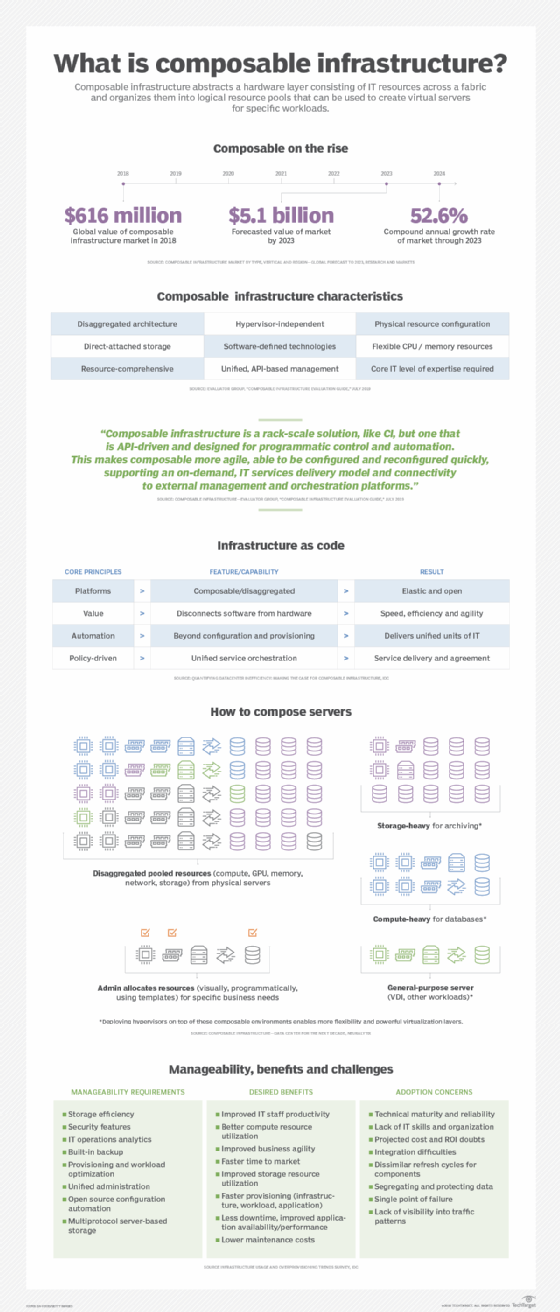How composable disaggregated infrastructure works
Familiarize yourself with how composable infrastructure works, core characteristics and benefits, and what enterprises hope to gain from this infrastructure-as-code delivery model.

Composable disaggregated infrastructure, or architecture, is catching the attention of IT professionals and vendors -- and for good reason. So, what is composable infrastructure exactly and how does it work?
Well, it is a data center paradigm with a software layer that abstracts, or disaggregates, a hardware layer consisting of IT resources across a fabric and organizes them into logical resource pools, not dissimilar to a hyper-converged infrastructure (HCI) cluster. But rather than having a linked-up series of self-contained nodes of compute, storage, network and memory, as in HCI, composable infrastructure is a rack-scale solution like converged infrastructure (CI).
Unlike CI, however, composable disaggregated infrastructure is -- at its core -- an infrastructure-as-code delivery model with an open and extensible unifying API layer that communicates and controls hardware resources. These APIs enable programmatic and template-driven control and automation, which, in turn, enables admins to rapidly configure and reconfigure disaggregated IT resources to meet the requirements of specific workloads and DevOps.
This flexibility and speed are, in part, the reason some analysts expect the composable infrastructure market will take off over the next few years. See the infographic for more on the answer to the question: What is composable disaggregated infrastructure?